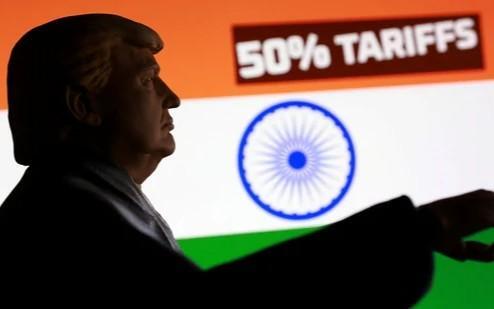
Which Indian Sectors are Worst-Hit by Trump’s Tariffs?
The ongoing trade tensions between the United States and India have taken a toll on various Indian sectors, with some being worse-hit than others. The imposition of 25% penalty tariffs by the US President Donald Trump has resulted in a significant increase in tariffs on several Indian exports, causing concerns among industry players and policymakers alike.
According to reports, the tariff on gems and jewellery exports, worth $10 billion, has risen from 2% to over 52%. This increase is expected to have a ripple effect on the industry, leading to higher costs, reduced demand, and potentially even job losses. The gems and jewellery sector is a significant contributor to India’s exports, and any disruption to this industry could have far-reaching consequences.
Another sector that has been severely impacted is the textiles and apparel industry. The tariff on exports worth $5.4 billion has risen to 63.9% from 13.9%, making it one of the highest increases across all sectors. This sudden surge in tariffs is expected to lead to a significant increase in costs for Indian manufacturers, making it challenging for them to remain competitive in the global market.
Carpet exports, worth $1.2 billion, are another area that has seen a significant increase in tariffs. The tariff has climbed to 52.9% from 2.9%, making it one of the most affected sectors in the Indian economy. The increase in tariffs is expected to lead to higher costs for Indian carpet manufacturers, making it challenging for them to maintain their market share.
Other sectors that have been hit hard by Trump’s tariffs include shrimps, handicrafts, and agriculture exports. Shrimps, which are a significant contributor to India’s seafood exports, have seen their tariff increase to 20.4% from 2.4%. Handicrafts, which are known for their unique designs and craftsmanship, have seen their tariff increase to 15.4% from 2.4%. Agriculture exports, which include products such as basmati rice, have seen their tariff increase to 10.4% from 2.4%.
The increased tariffs have also led to concerns about the impact on India’s exports, which have been a significant contributor to the country’s economic growth. The country’s exports have been growing at a sluggish pace in recent years, and the increased tariffs are expected to further slow down this growth.
The Indian government has been trying to negotiate with the US government to resolve the trade tensions and reduce the tariffs. However, the negotiations have been ongoing for several months, and there has been no breakthrough yet. The Indian government has also been exploring other options, such as seeking exemptions or negotiating with other countries to reduce the impact of the tariffs.
In conclusion, the Indian sectors that are worst-hit by Trump’s tariffs include the gems and jewellery industry, the textiles and apparel industry, the carpet industry, and other sectors such as shrimps, handicrafts, and agriculture exports. The increased tariffs are expected to lead to higher costs, reduced demand, and potentially even job losses, making it essential for the Indian government to resolve the trade tensions and find a solution to this crisis.






